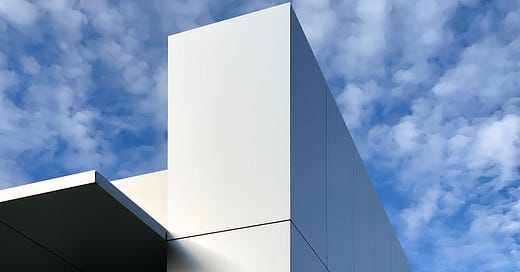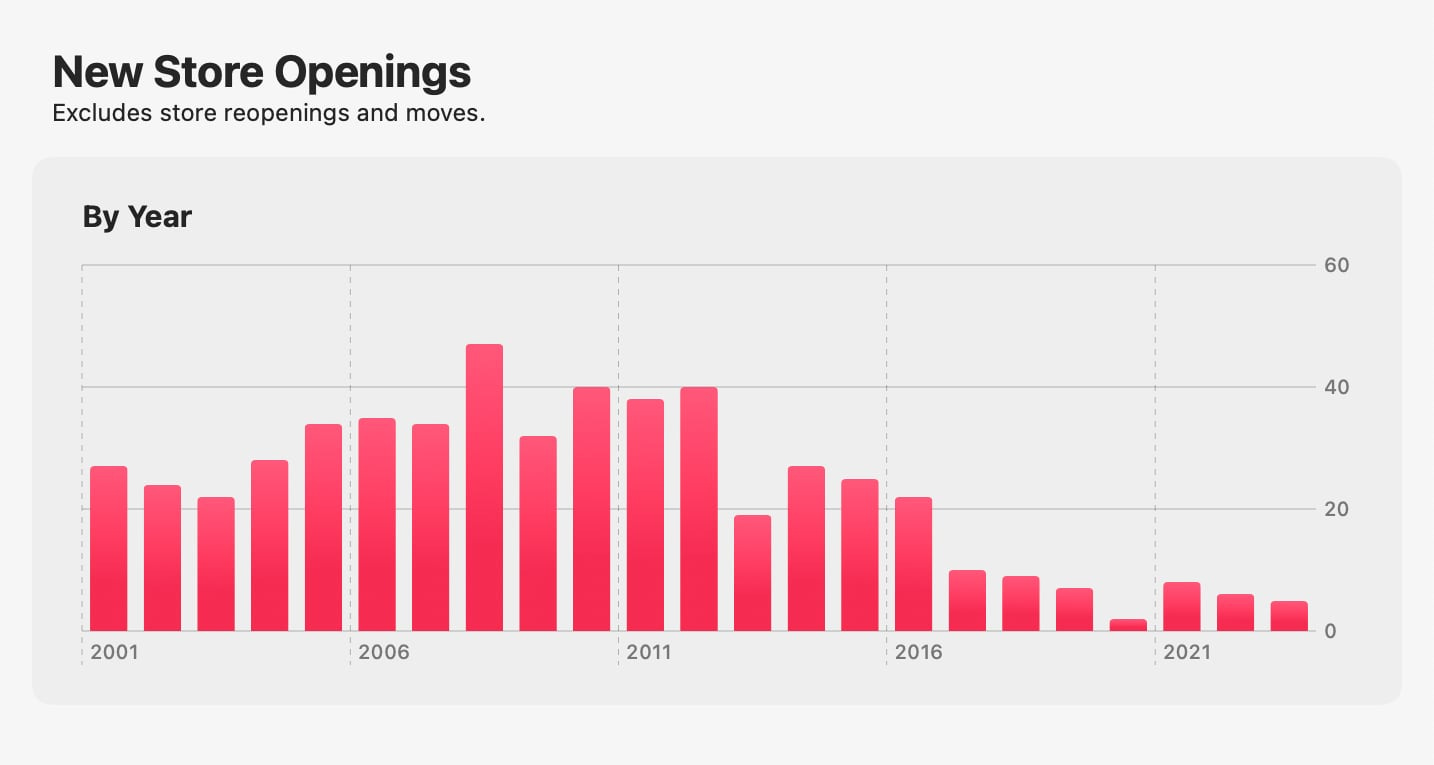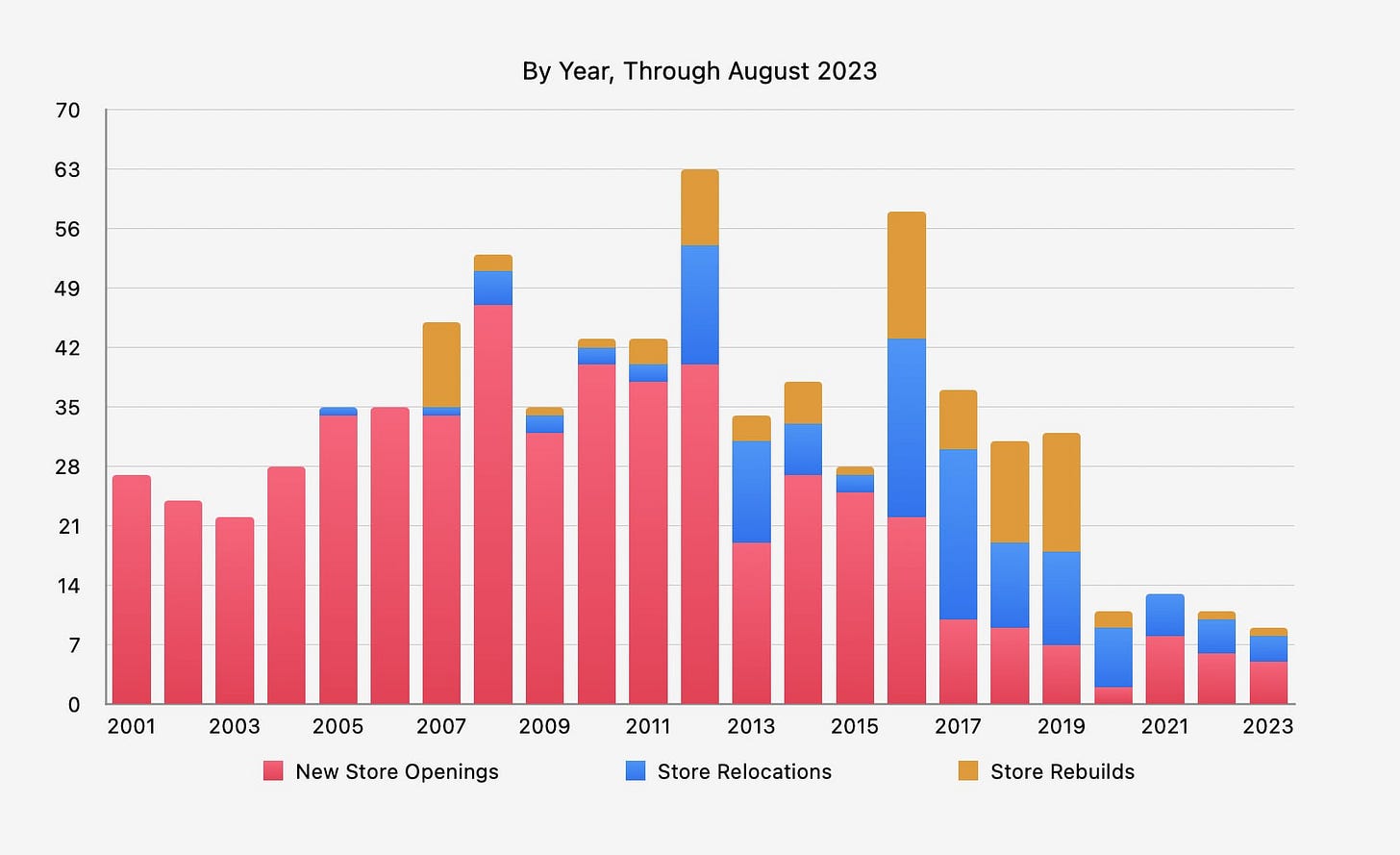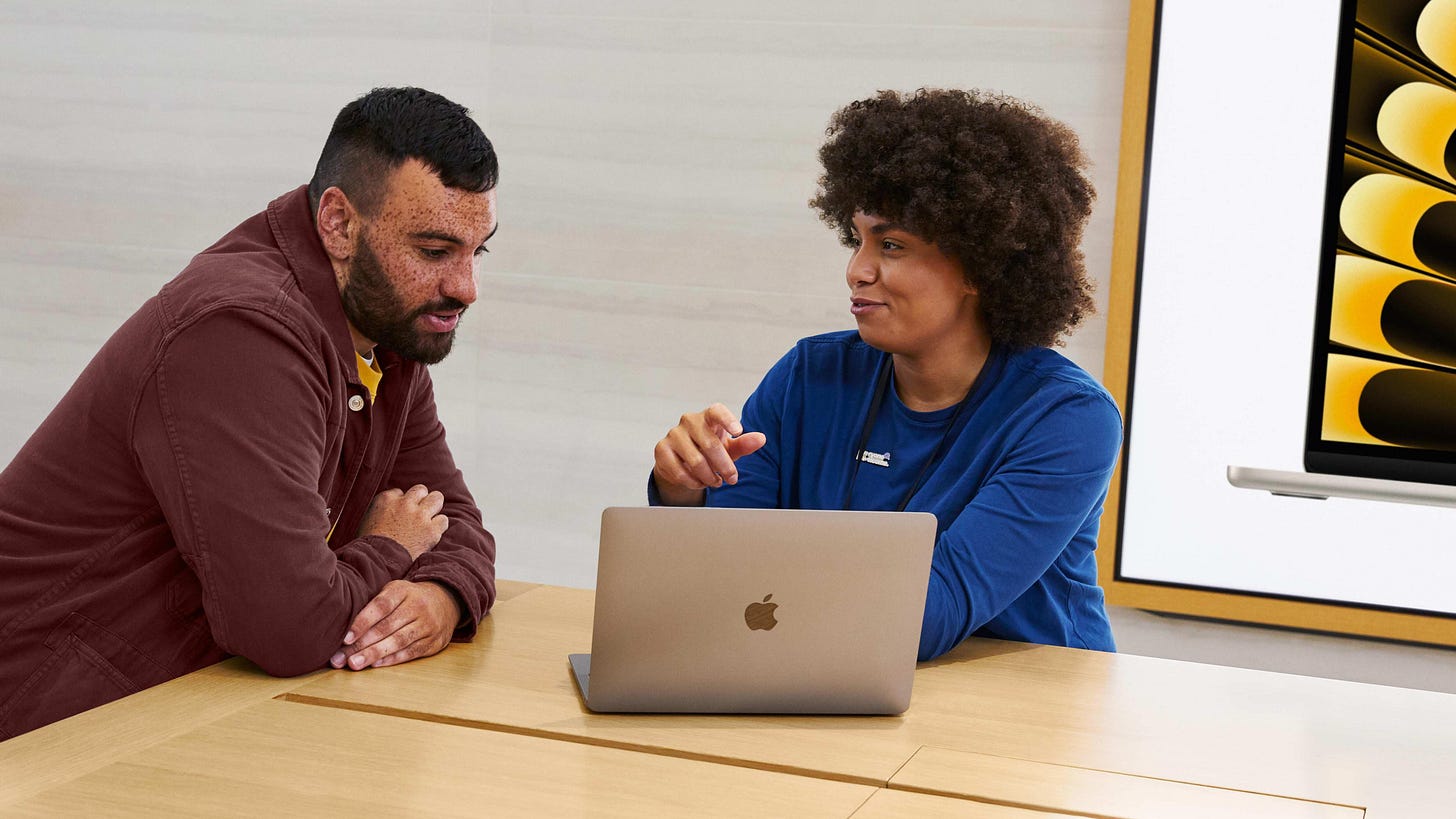Tucked inside Facades is a chart that logs new store openings by year. Based on numbers alone, 2023 is shaping up to be a solid year. We’ve seen five new stores in the first eight months compared to six in all of 2022 and eight in 2021. 2020 (unsurprisingly) saw just two new openings.
But that chart only tracks openings with a new store number like Apple Battersea, not relocated or rebuilt stores like Tysons Corner. That data (not yet in Facades) tells a different story.
This chart depicts a dramatic cooling in the total number of new store projects since the pandemic, mostly due to a significant drop in store relocations and rebuilds. My definition of a “rebuild” is total or near-total redesign and reconstruction of an existing store in place.
These numbers alone still form a distorted picture of Apple’s update pace. As some markets reach store saturation, expansion gives way to upkeep. There are more Apple Stores to maintain today than at any point in history, and roughly half are at least a decade old. Stores continue to be renovated, and the nature of those renovations has also changed.
Until recently, it seemed that Apple planned to rapidly replace the majority of its Classic locations — the stainless steel stores that mirror the industrial design of the Power Mac G5 — with more modern spaces built to accommodate today’s products.
After years of service, all but the last and most prestigious Classic Stores feel a bit shoehorned into 2023, and the pandemic brought a forced mothballing of every location during store closures. What’s taken shape since renovations resumed is surprising. Not only has Apple virtually stopped replacing all but the smallest and oldest Classic Stores, it’s started significantly reinvesting in them.
There are entirely rebuilt backstage areas with more accessible bathrooms, expanded stock rooms, repair rooms, and offices. Some stores have new flooring, tables, counters, Genius Bars and mechanical upgrades. The temporary closures and reopenings I document frequently here often have no obvious customer-facing changes to report back on, but the work being done behind the scenes is colossal.
Apple isn’t just rehabbing these Classic Stores long enough to squeeze out a few more sales, it’s spending millions of dollars to right them for years to come. Notably, this reinvestment is wholly different than the Classic Store Forum installations of 2018 and 2019, upgrades that touched only more significant locations. It once felt like every store would converge on a single design language, but now the message seems clear: Classic Stores are here to stay.
Shinsaibashi
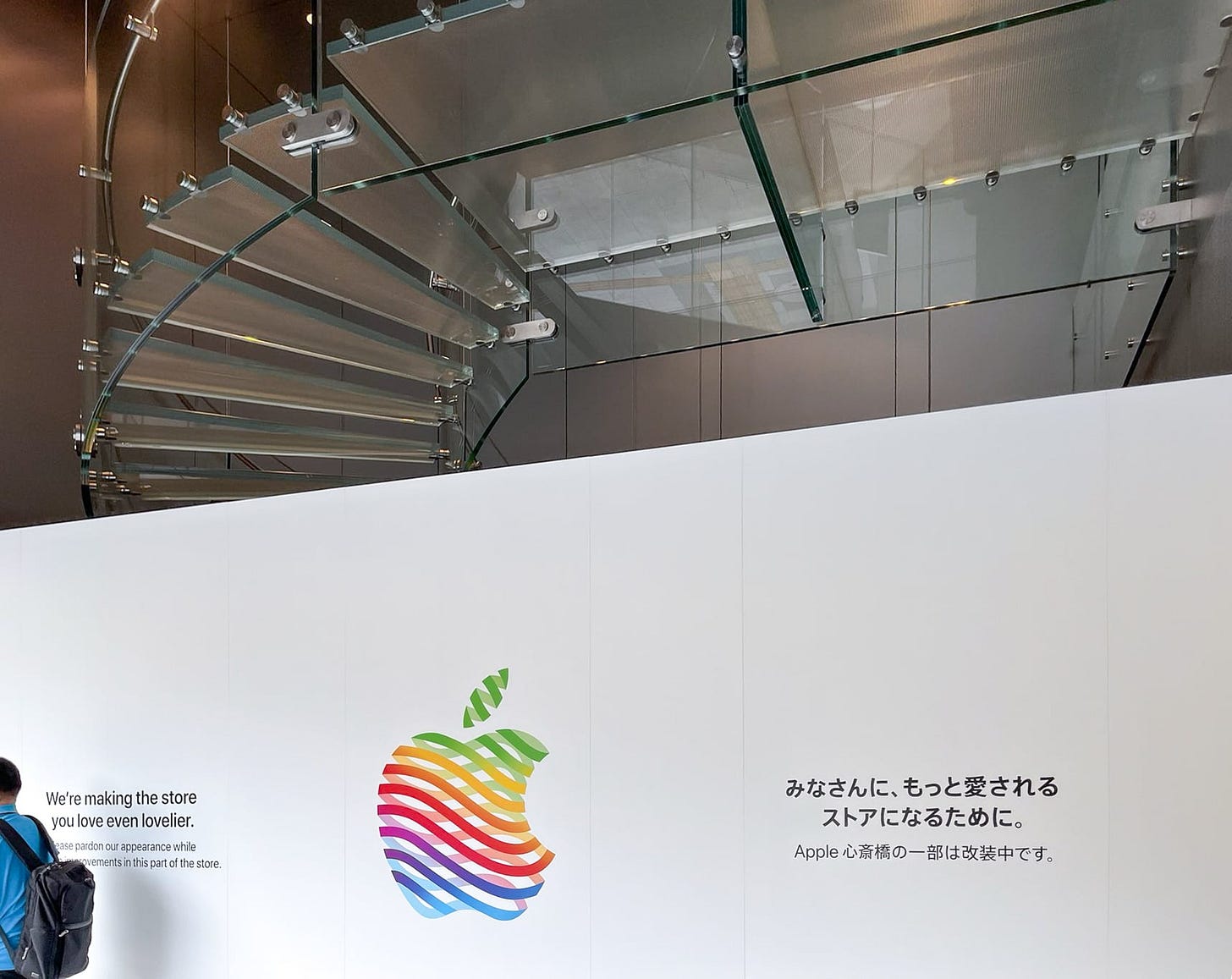
Renovations began at Apple Shinsaibashi in Osaka, Japan on approximately August 22. The second floor of the 2004-built store and its spiral glass staircase are entirely closed. Eagle-eyed Apple Store watchers will recognize Shinsaibashi as the last store in the world with a Theater, a relic of the earliest store designs. It’s also one of the last with (non-historic) wood flooring — the other is Apple Wellington Green.
It’s hard to imagine the Theater or floor surviving this renovation, so I’m dedicating September’s bonus issue of Tabletops entirely to commemorating the Theater. Paid subscribers can look forward to it in their inboxes soon.
Today at Apple
Apple recently pared back the Today at Apple calendar to focus on fundamental sessions that help new customers get up to speed and group reservations. The Today at Apple website is now updated to match, with new photography, new session names, and two simple sections: Daily Sessions and Kids & Families. Check out the new page to familiarize yourself with the updated lineup. For further reading on the evolving role of Today at Apple, revisit this issue of Tabletops from May.
Featured image
Apple Central World
Photo via @edwinyg.

